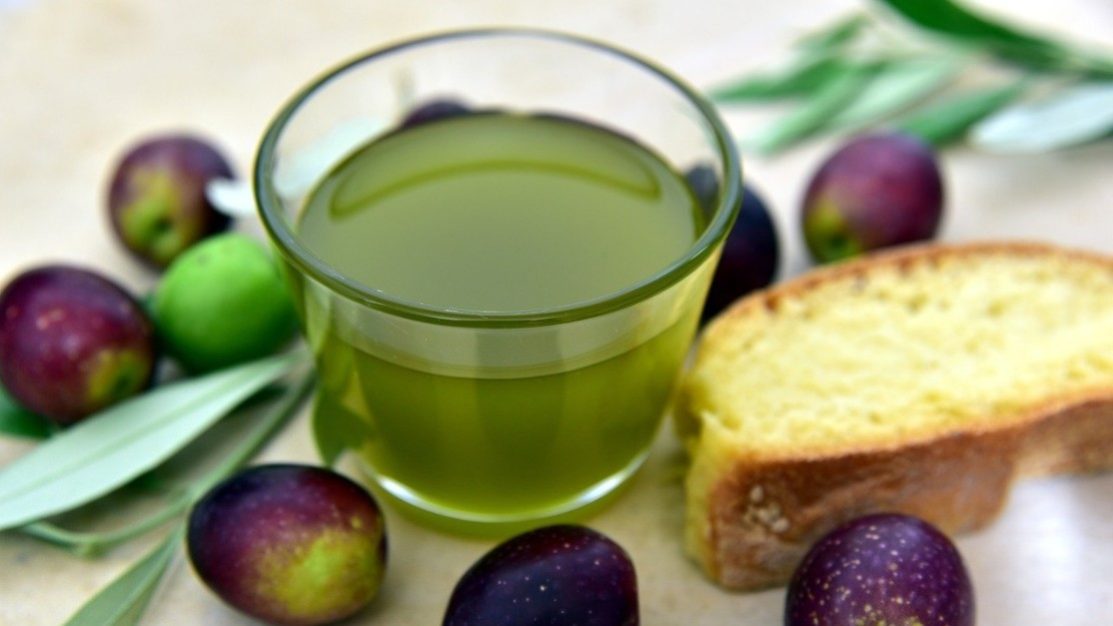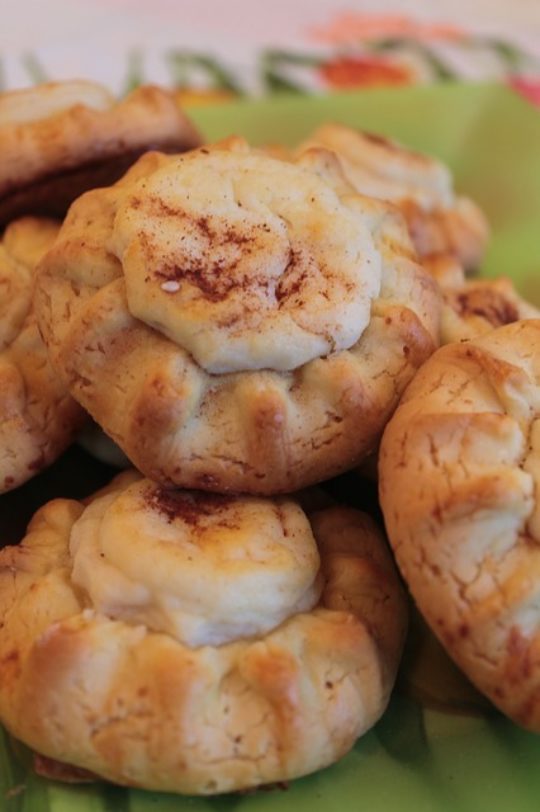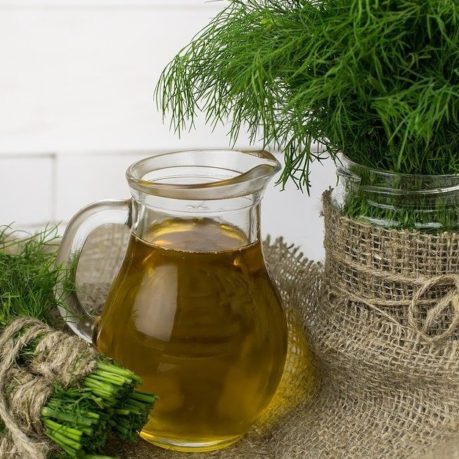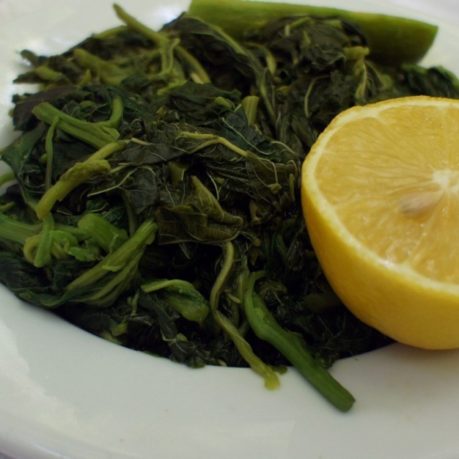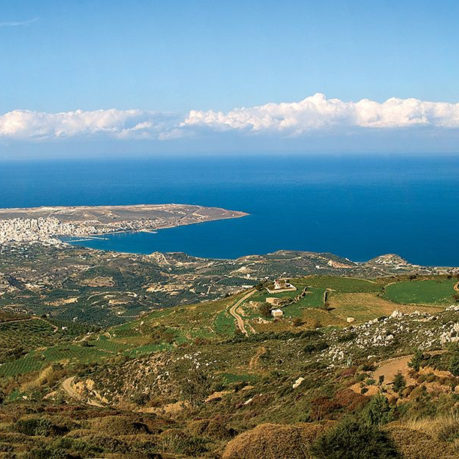The foundations of the “Mediterranean diet” lie in Cretan practices.
The first rule of the Cretan diet, which has lain the foundations for the development of the renowned “Mediterranean diet”, is golden. We specifically refer to the liquid gold of Homer, the precious golden olive oil, consumed by the Cretans in significant quantities, both raw, in salads or boiled vegetables, and cooked, in savory and sweet dishes. It is the main, and practically the only, fatty substance of the Cretan cuisine, a product of the blessed and Sacred Olive Tree.
Wheat and barley cereal, shaped into double-baked rusks, sourdough bread, homemade skewered spaghetti, trachana, lasagna and “chodros”, fruit, vegetables, wild and cultivated greens, mushrooms, snails, legumes, wine, honey, olives, nuts such as almonds, walnuts and chestnuts, are not missing from the table. Endemic herbs of the Cretan land, in incredible variety, have been exported all over the known world since antiquity, and cause a sensation with their aromas and health-protective properties to this day.
The products of animal origin consist mainly of fish and other seafood, small animals such as poultry, rabbits, hares and partridges, dairy products, such as mizithra, graviera, butter, staka, xygalo and sheep / goat meat farmed on the island. Especially meat is traditionally consumed in moderation.
Interesting fact: Looking back to antiquity, meat would usually be cooked in connection with ritual sacrifices and, in modern history, on the occasion of Orthodox holidays or Sunday family dinners. That is, only in exceptional circumstances.
It is often combined with greens, such as artichokes, asparagus, green beans, eggplants, zucchini, okra, peas, blites, purslane, blackberry nightshade, radishes, roots, celery, leeks, dill, fennel and many more. Of course, all of the above can be served alone boiled or sauté as main dishes, cooked with plenty of olive oil, or raw, as exquisite appetizers, e.g. grass peas, artichokes and green beans, complemented with raki (traditional liquor made of grapes). In the dishes of Cretan cuisine, one can taste the turns of the seasons and enjoy the fruits that the earth has to offer each time.
Nothing goes to waste. Just as the olive tree offers its oil, fruits, kernel, leaves and wood, the vine gives its grapes, from which raisins, grape must, molasses and, of course, wine and the Traditional Cretan raki, are produced. Vine leaves are stuffed with rice, to make dolmadakia, a gourmet delicacy. Make dolmadakia
Gourmet fact: “Agourides”, i.e. unripe grapes, have been squeezed since antiquity, to add a pleasant sour taste to salads and greens.
Locust beans (carobs) are a nutritious food that sustained the population in the difficult times of the occupation. To this day, they are used to produce coffee, flour, carob syrup, even carob “cocoa”!
The island has always been self - sustained, with constant productivity and a variety of goods. Among the few goods that have been imported from time to time, one has stood out. The tomato was integrated into Cretan Cuisine in the 19th century and was a perfect addition. In many cases, it even starred in dishes accompanied by traditional products, for example the emblematic Cretan dakos.
Interesting fact: The history of the Cretan diet takes us back to the Minoan years. Its basic rules still apply, unchanged. According to research, until recently, Cretans presented an almost non-existent percentage of cardiovascular and neoplastic diseases. Learn about the research
